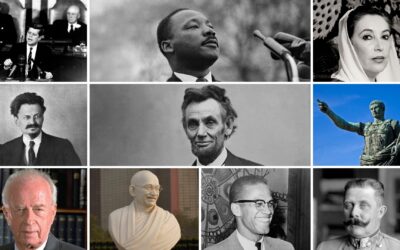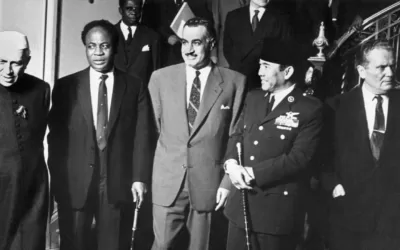It is said that locations, like people, have stories to tell. Nestled amidst the mountains of New Mexico, the Los Alamos National Laboratory is one such place. Its story is imbued with scientific triumphs, political intrigue, and ethical debates that have helped shape the world we know today. This narrative aims to weave a comprehensive tale of Los Alamos’s past, present, and future, shedding light on the crucial role it has played and continues to play in global scientific advancement.
As we tread the corridors of the past, our story begins during the darkest days of World War II. In 1943, under the auspices of the Manhattan Project, the Los Alamos Laboratory, as it was initially known, was established with a singular, formidable task: to develop an atomic bomb. The lab was shrouded in secrecy, an enigmatic hub where some of the world’s brightest minds, including Robert Oppenheimer and Niels Bohr, grappled with the paradox of creating a weapon of mass destruction to ensure world peace.
The culmination of their efforts came in 1945, with the Trinity Test marking the world’s first nuclear explosion. Subsequently, the atomic bombs, “Little Boy” and “Fat Man”, were dropped on Hiroshima and Nagasaki, causing unparalleled destruction but also bringing the war to an abrupt end. This event marked the close of the lab’s first chapter, leaving a profound imprint on global history.
However, the end of the war did not signify the end for Los Alamos. In the ensuing years, the laboratory transitioned from a temporary war initiative to a permanent national research institution. It expanded its research areas, delving into the peaceful applications of nuclear science, fundamental physics, chemistry, and other branches of science. Notably, it developed the first nuclear reactors designed for continuous power generation, making a significant contribution to the burgeoning nuclear energy industry.
As we journey from the past into the present, we find that Los Alamos National Laboratory has evolved into a multidisciplinary research institution. It maintains a dual commitment to national security and general scientific advancement.
The lab’s contributions to national security are manifold. It is involved in nuclear deterrence, helping to maintain the country’s nuclear arsenal as a means of deterring potential threats. Furthermore, it has developed capabilities in nuclear non-proliferation, counterterrorism, and energy security.
Beyond its national security endeavors, Los Alamos conducts fundamental research in various scientific disciplines. Its researchers are involved in cutting-edge projects in the realms of bioinformatics, climate science, materials science, and more. They’ve made strides in understanding infectious diseases, modeling climate change, and developing new materials with exceptional properties. The lab’s research has often been at the forefront of scientific innovation, contributing to the global scientific community’s collective knowledge.
Peering into the future, it becomes evident that Los Alamos National Laboratory is poised to remain a vital hub for scientific research and development. As the world grapples with complex challenges such as climate change, pandemics, and cybersecurity threats, the lab’s multidisciplinary approach is more relevant than ever.
In the realm of energy, the lab is focusing on sustainable solutions. Projects related to renewable energy, energy efficiency, and advanced nuclear energy systems are high on its agenda. In environmental research, scientists are intensifying their efforts to understand climate change and its impacts, providing crucial insights for policymakers.
In health and biotechnology, the laboratory is working on understanding diseases at a molecular level, potentially leading to breakthroughs in drug development and personalized medicine. Its supercomputing capabilities are being leveraged to analyze vast datasets, a critical aspect of modern biology.
As we continue to delve into the digital age, the laboratory is also at the forefront of developing robust cybersecurity solutions, a critical component of national and global security in an increasingly interconnected world.
As we conclude this journey through time, it becomes clear that Los Alamos National Laboratory’s story is intertwined with humanity’s scientific narrative. From its secretive inception as a wartime initiative to its present status as a beacon of multidisciplinary research, the laboratory has continually adapted and evolved. As it navigates the future, one can expect it to remain at the forefront of scientific discovery, grappling with the complexities of modern challenges, and contributing to a better and safer world.
Thus, the Los Alamos National Laboratory stands as a testament to human ingenuity and the relentless pursuit of knowledge, a physical embodiment of the promise and challenges that scientific progress presents. As the lab’s story continues to unfold, it’s certain to add many more exciting chapters to the annals of scientific history, propelling humanity forward on its unending voyage of discovery.
Keywords:
- Manhattan Project: A research and development undertaking during World War II that produced the first nuclear weapons.
- Trinity Test: The first detonation of a nuclear device conducted by the United States Army on July 16, 1945.
- Nuclear Deterrence: A military doctrine where a state uses the threat of nuclear weaponry to deter another state from attacking or seeking to wage war against it.
- Nuclear Non-Proliferation: The act of preventing the spread of nuclear weapons and weapons-applicable nuclear technology and information.
- Bioinformatics: An interdisciplinary field that develops methods and software tools for understanding biological data, particularly when the data sets are large and complex.
- Materials Science: An interdisciplinary field involving the properties of matter and its applications to various areas of science and engineering.
- Energy Security: The association between national security and the availability of natural resources for energy consumption.
- Supercomputing: Pertains to the most powerful and fastest computers at a given time, used for problems requiring complex calculations.
- Renewable Energy: Energy from a source that is not depleted when used, such as wind or solar power.
- Personalized Medicine: A medical model that separates patients into different groups—with medical decisions, practices, interventions and/or products being tailored to the individual patient based on their predicted response or risk of disease.
Key Takeaways:
- The Los Alamos National Laboratory was originally established as part of the Manhattan Project during World War II, tasked with developing the first atomic bombs.
- Post-war, the laboratory expanded its research areas, focusing on the peaceful applications of nuclear science, fundamental physics, chemistry, and other branches of science.
- In the present day, the laboratory is a multidisciplinary research institution, conducting cutting-edge research in a variety of scientific disciplines, contributing to both national security and general scientific advancement.
- The lab is involved in research and development projects related to sustainable energy, climate science, bioinformatics, materials science, and cybersecurity, among others.
- Looking to the future, the Los Alamos National Laboratory is set to remain a critical hub for scientific research and development, aiming to provide solutions for global challenges like climate change, pandemics, and cybersecurity threats.
The Nuclear Age Articles
Unraveling The Atomic Age: The Life and Legacy of J. Robert Oppenheimer
Unveiling the Atom: The Manhattan Project’s Deep Impact on World History
Albert Einstein: The Maverick Mind that Revolutionized Physics
Leo Szilard: The Atomic Pioneer’s Crusade for Peace
The Ethical Odyssey: Exploring Morality in the Course of Scientific Discovery
Los Alamos National Laboratory: Navigating the Past, Present, and Future of Scientific Innovation
The Cold War: Superpowers in the Ballet of Weaponry
Nuclear Proliferation: The Ever-Present Global Challenge
Interplay of Science and Politics: The Unsung Dance of Progress
Enrico Fermi: Mastermind Behind the Nuclear Age
From Atomic To Thermonuclear: A Detailed Examination of Nuclear Weapon Evolution
The Unforgotten Echoes: Hiroshima and Nagasaki’s Tale of Nuclear Devastation and Human Resilience
Living Under the Mushroom Cloud: The Psychological Impact of the Nuclear Age
Nuclear Fallout: Unmasking the Invisible Threat to Health and Environment
The Power and Peril of Nuclear Energy: A Balanced Perspective
Radiation Sickness: Unveiling the Hidden Costs of the Nuclear Age
From Darkness to Light: Lessons from Chernobyl and Fukushima
Deciphering the Nuclear Waste Conundrum: The Path Towards Sustainable Solutions
Guarding the World from Nuclear Threats: International Laws for Nuclear Disarmament
Journey to Peace: Unraveling the Path to Global Nuclear Disarmament
Culture Echoes of the Atomic Age: Artistic Narratives in the Nuclear Era












0 Comments